Showing 61–72 of 1201 results
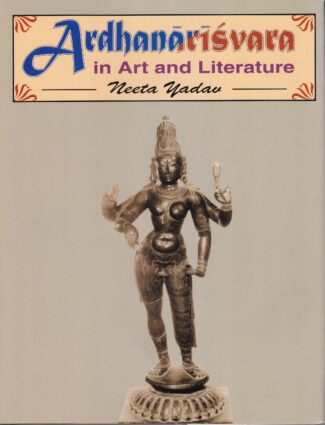
The scholarly work throws light on the artistic, aesthetic, literary and philosophical aspects of the Ardhanarisvara form of Siva. Providing a conceptual and historical background of the doctrines relating to Siva and Sakti worship it involves an iconographical study of the Ardhanarisvara image.
The scholarly work throws light on the artistic, aesthetic, literary and philosophical aspects of the Ardhanarishvara form of Shiva the form which is a divine expression of the amalgamation of the male and the female and is said to contain the whole world in it. Providing a conceptual and historical back-ground of the doctrines relating to Shiva and Shakti worship it involves an iconographical study of the Ardhanarishvara image, with the focus on its dress, ornaments, coiffure, posture and other features. With many visuals of the Ardhanarishvara images even the unpublished ones, it describes the images found in different parts of India and discusses the emergence of the deity relying on literary sources and theories. Explaining how the idea and actual representation of the unity of Shiva and Shakti came to acquire supreme importance with the growth of sects each worshipping the deity in its own form, Dr. Yadav points out that the Ardhanarishvara aspect is basically the output of the Tantra philosophy. Providing maps and line-drawings and a list of the places that have yielded Ardhanarishvara images, she makes an interesting and indepth analysis, based on extensive field-work, to come up with some brilliant and new explanations of the meaning and implications of the Ardhanarishvara.

This book targets those persons who seek to learn about and understand the multiple forms of religious or spiritual or secular life, across the globe. It aims to foster mutual understanding, communication and dialogues between persons having different religious, spiritual and secular orientations.
The book, more than a philosophic endeavour, elaborately and meticulously discusses a vibrant thought – Are You Religious or Spiritual, or Atheist or Secular, or What? – for our deep contemplation and action, and suggests means to address the challenges that crop up in our spiritual life in a simple and lucid style. It is focuses on those persons who seek to learn about and understand the multiple forms of religious or spiritual or secular life. It aims to foster mutual understanding, communication and dialogues between persons having different religious, spiritual and secular orientations, and calls for a peaceful coexistence of people of different world views. In the present world spiritual scenario, it suggests a spiritual alternative of letting go with love and compassion, which is highly appealing. Also it gives an overview of the major religion of the world, keeping in mind both religious and non-religious people and persons from all walks of life. The unique feature of this volume is its down to earth practicality and simplicity in introducing, analysing and guiding its readers when dealt with a complex topic of religion and spirituality.
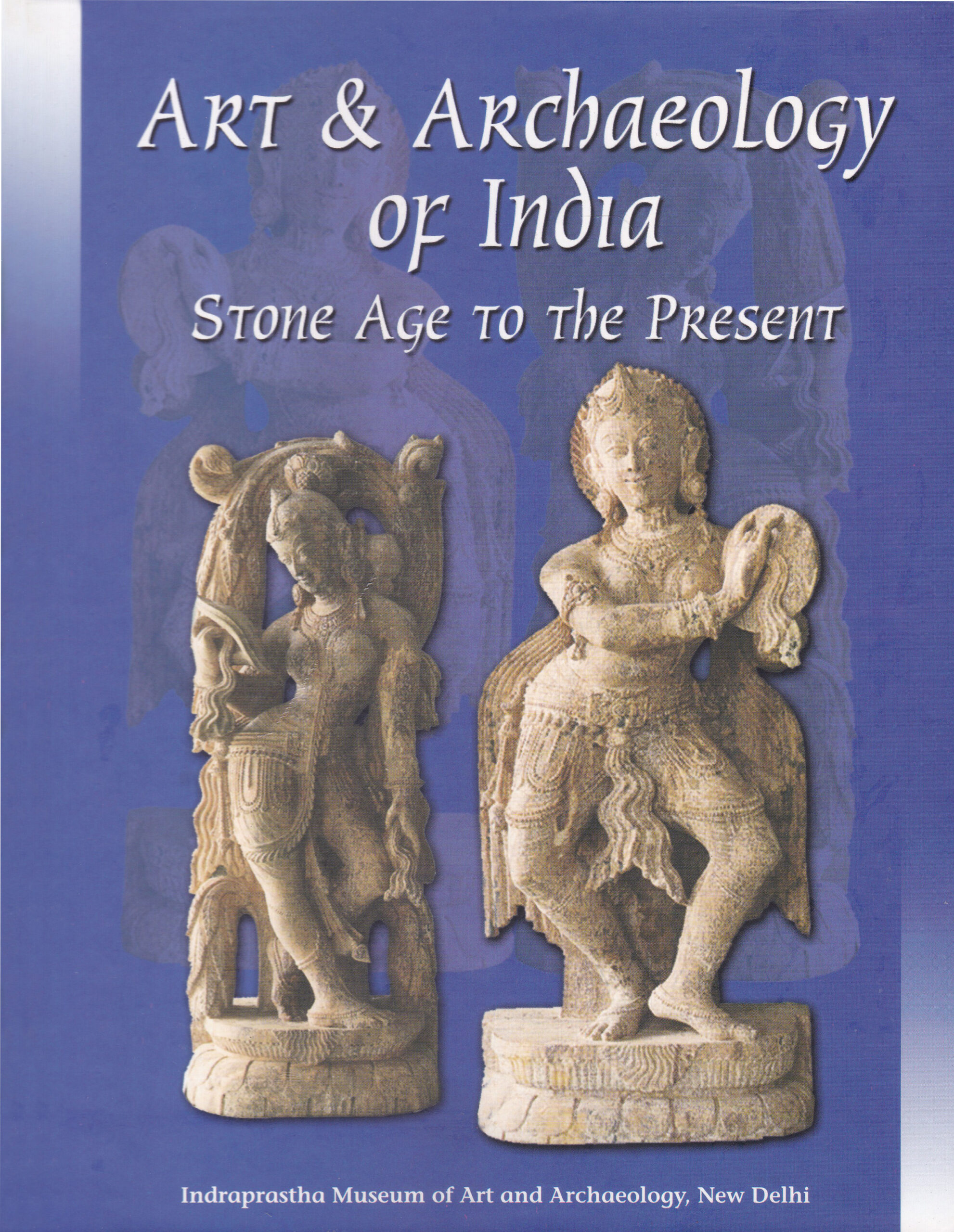
The book begins with an introduction on the prehistoric and proto-historic cultures of India and discusses human evolution as gathered from hominid fossil remains. It also examines the nature of cultural relics belonging to each period and dynastic rule; agriculture, trade, settlement and migration patterns related to making, use and spread of art materials; and social and religious aspects of society that are revealed by the art and architecture of the periods.
The book begins with an introduction on the prehistoric and proto-historic cultures of India. Well-known historians discuss human evolution as gathered from hominid fossil remains, pre-human hominid remains of the Siwaliks and fossil remains of the Narmada basin. The systematic study, mentioning the areas of finds and their geography and other characteristics, examines the nature of cultural relics belonging to each period and dynastic rule; agriculture, trade, settlement and migration patterns related to making, use and spread of art materials; how the finds reflect upon rise of craft and industrial centers at the time; and social and religious aspects of society that are revealed by the art and architecture of the periods. Importantly, it reveals the interchange of cultural thoughts and lifestyles and of art and architectural influences; and the synthesis of artistic style and materials as evident in especially the periods of Muslim rule in India. The book also features fossil finds, art and architectural materials pertaining to painting, pottery, sculpture and iconography, and literary materials like Persian documents housed in the Indraprastha Museum of Art and Archaeology, New Delhi. The materials date from the stone ages, Indus-Saraswati Civilization and Chalcolithic period to what are commonly identified as the ancient medieval and modern periods of Indian history. The volume will be useful to scholars and students of various disciplines history, archeology, art and culture, and sociology.
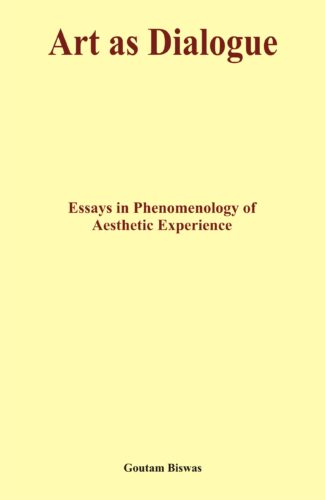
The original work presents a totally new methodology for understanding the concept of aesthetic experience through the medium of dialogue a dialogue between the subject and object, I and Thou.
This refreshingly original work presents a totally new methodology for understanding the concept of aesthetic experience. The traditional model of explaining this experience through the dichotomy of the creator, beholder or critic on the one hand, and the object of art, on the other is challenged and replaced by the new model which the author prefers to call dialogue a dialogue between the subject and the object, I and Thou. The epistemological and ontological methods which rely heavily on the bifurcation of the subject and the object fails to reveal the true nature of the experiential whole that forms the real core of aesthetic experience. The authors innovative methodology holds the promise for transcending the bounds of all such limitations and distinctions. Most significantly, the conception of art as dialogue is stipulated to work not as a means, but as an end, i.e., the consummation of art-experience itself. In this scheme the principle of relationship, not the substance, constitutes the reality of aesthetic experience and the model allows one to encompass within its scope the pre-linguistic, linguistic and trans-linguistic phases of the relationship between the man and the art. Dr. Biswas long training in Phenomenology and Existentialism makes his study of Martin Buber and Michael Polanyi lucid and stimulating. And his immense interest in Modern Indian Philosophy results in a superb analysis of Tagores and Radhakrishnans aesthetic approach
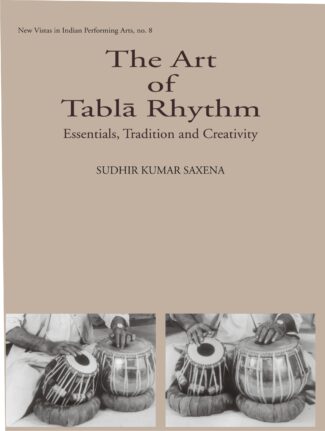
Beginning with the evolution of the Tabla, the book deals comprehensively with Tabla rhythm and explains the technique of producing the basic bols. It further describes the way to do reyaz on the Tabla, and explains the principal compositions that make up a standard Tabla recital. The CD accompanying the book carries samples of the Tabla of the major gharanas.
This authoritative work deals comprehensively with Tabla rhythm, focusing on the performed art with an eye to its history and aesthetics. It is aimed at the Tabla student, the Tabla performer, as well as the inquiring listener of Hindustani music, for whom it encapsulates a Tabla practitioner’s knowledge in these matters acquired over a lifetime of learning and teaching. Beginning with the evolution of the Tabla, the book explains the technique of producing the basic bols. It further describes the way to do reyaz on the Tabla, to maintain the instrument through changing seasons, and to raise and moderate its pitch, besides other practical directions. The author explains the principal compositions that make up a standard Tabla recital, and how they may be played in solo and sangat contexts. The major gharanas of Tabla are discussed critically, and their notated compositions are provided in both Roman and Devanagari scripts. The CD accompanying the book carries samples of the tabla of these gharanas recorded under the author’s direction, as well as demonstrations of compositions used as illustrations in the book. Grounded in traditional learning in Tabla rhythm, the book is written with a rational, empirical mind, and in a lucid manner all along which makes it accessible to a wide range of musicians and listeners.
“An assemblage of twenty-six scholarly essays: in honour of Dr Kapila Vatsyayan, the book attempts to conjure up the integral vision of art — exploring, as it does, the underlying unity of different disciplines. Written by distinguished Indian and foreign scholars: artists, art historians, archaeologists, anthropologists, scientists, philosophers and litterateurs, who have shared or subscribed to Dr Vatsyayan’s holistic vision of arts, these essays look for the linkages that have existed within the arts, between the arts, and across the cultures — focusing, contextually, on the form, the content, and the vision of art in terms of time and space. With at once stimulating alternative viewpoints available to humankind today, the authors consider space, time and consciousness as they are related to, and expressed in, metaphor, symbol and creative process. Together with cross-cultural comparisons of art, the book also explores the future of man as an artist. Art: The Integral Vision, besides the Editors’ Introduction giving an overview on the presentations, is blessed by His Holiness the Dalai Lama’s personal message. A foremost authority on Indian art and culture, Dr Kapila Vatsyayan is well-known to all serious scholars of art history, religion, philosophy and cosmology. A prolific author and recipient of several honours, including the prestigious Padma Shree (1990) and Padma Vibhushan (2011), she has convincingly spelt out the unifying principles of cultural plurality and the interdependence and interrelatedness of creative arts. This holistic vision — unmistakably manifest in her writings — has come to finest fruition in her setting up (in 1985) the Indira Gandhi National Centre for the Arts (IGNCA), New Delhi. This is a fascinating book for wide-ranging specialists and students interested in the mathematical, geometrical, metaphysical, astrophysical, cosmological, philosophical, psychological, historical, mythological and metaphorical understanding of art, especially the Indian art.”
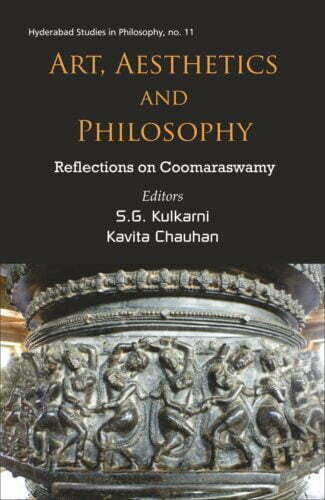
This book presents the varied reflections on Coomaraswamys personality as a philosopher, art historian, art curator and his strong positioning against the colonial teachings of Western art historians and philosophers on Indias art, civilization and culture, projecting an image of Indianness in every sphere.
The savants of the twentieth century have excavated the past to discerningly reveal the present. Swami Vivekananda, Rabindranath Tagore, Sri Aurobindo, Mahatma Gandhi and Ananda Coomaraswamy, among others, interpreted Indian aesthetics, civilization, culture and philosophy unearthing the Indian wisdom against the wrong interpretations and teachings of the Western colonial scholars. This volume, a collection of papers presented at a national seminar on the Philosophy of Ananda Coomaraswamy held in February 2011 at the University of Hyderabad, approaches Coomaraswamys philosophy on Indian aesthetics, life and religion from different perspectives.
The volume brings forth different facets of Coomaraswamy: as a catalyst in spiritualizing Indian arts; his views on modernism and anti-modernism; his efforts in aestheticizing India; his polemics of decolonization through art criticism; his aesthetical philosophy; his perception and understanding on art, culture and Indianness; his metaphysics; and his philosophical approach to visuals and materials from the lens of an art historian. It sketches Coomaraswamys multifaceted persona, enunciating that the crux of modern Indian philosophy is one of vision, rather than building theories.
In a nutshell this book presents the varied reflections on Coomaraswamys personality as a philosopher, art historian, art curator and his strong positioning against the colonial teachings of Western art historians and philosophers on Indias art, civilization and culture, projecting an image of Indianness in every sphere.
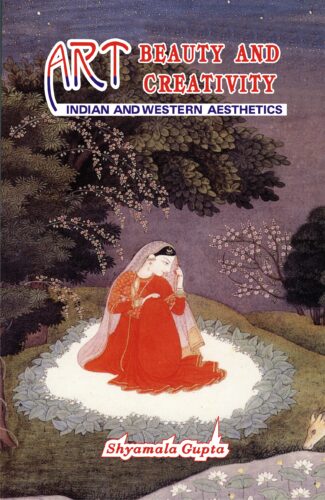
It studies the historical progression of aesthetics both Indian and Western since ancient times, focussing on the landmarks in the course of its development and theories on art, beauty and related concepts.
When the 18th century German philosopher, A.G. Baumgarten first introduced Aesthetics as an academic discipline to deal with the philosophy of beauty, he couldnt possibly have anticipated the controversies that have lately been raised by logical positivists, analytical schools, and even linguists -controversies questioning the validity, the very legitimacy, of a philosophical inquiry into beauty, art and creative processes. Notwithstanding the relatively more recent usage of the term proper, Aesthetics has a millennia-long history: beginning, in the West, with the old-world Greek philosophers, like Pythagoras, Plato, and Aristotle; and, in India, with the Vedic writings, more specifically, Bharata. Dr. Shyamala Guptas book is indisputably a painstaking effort trying to chart the historical progression of aesthetics: both Indian and Western -with focus not only on its evolutionary landmarks, but on its important concepts and theories as well. Schematically structured into two parts, Part 1 of the book examines the status of Indian aesthetics: its theories of rasa and dhvani, and, besides these, of its world- view of art. In its Part 2 are traced the development ofWestern theories of art and beauty, together with their attendant issues appearing, from time to time: from the days of ancient Greek philosophers to contemporary thinkers. Additionally, the authoress also tries to show how art is positioned vis-a-vis morality, science, sport and culture. A comprehensive, meticulously updated perspective on aesthetics, the book is sure to interest anyone concerned with the discipline: whether as a specialist, a student or a general reader.

It studies the historical progression of aesthetics both Indian and Western since ancient times, focussing on the landmarks in the course of its development and theories on art, beauty and related concepts.
When the 18th century German philosopher, A.G. Baumgarten first introduced’ Aesthetics’ as an academic discipline to deal with the philosophy of beauty, he couldn’t possibly have anticipated the controversies that have lately been raised by logical positivists, analytical schools, and even linguists -controversies questioning the validity, the very legitimacy, of a philosophical inquiry into beauty, art and creative processes. Notwithstanding the relatively more recent usage of the term proper, Aesthetics has a millennia-long history: beginning, in the West, with the old-world Greek philosophers, like Pythagoras, Plato, and Aristotle; and, in India, with the Vedic writings, more specifically, Bharata. Dr. Shyamala Gupta’s book is indisputably a painstaking effort trying to chart the historical progression of aesthetics: both Indian and Western -with focus not only on its evolutionary landmarks, but on its important concepts and theories as well. Schematically structured into two parts, Part 1 of the book examines the status of Indian aesthetics: its theories of rasa and dhvani, and, besides these, of its world- view of art. In its Part 2 are traced the development ofWestern theories of art and beauty, together with their attendant issues appearing, from time to time: from the days of ancient Greek philosophers to contemporary thinkers. Additionally, the authoress also tries to show how art is positioned vis-a-vis morality, science, sport and culture. A comprehensive, meticulously updated perspective on aesthetics, the book is sure to interest anyone concerned with the discipline: whether as a specialist, a student or a general reader.

This book gives exhaustive and valuable insights into all aspects of the artisans and craftsmen of northern India who played a key role in the evolution of life between the seventh and twelfth centuries ce. This critical study examines the socio-economic conditions of the various categories of workers in stone, metal, clay, leather, cotton, salt, and other industries.
The basic aim of the book is to expose the major contributions of artisans and craftsmen in portraying the society in different perspectives. These artisans and craftsmen, were drawn mostly from the shudras, lower caste of the community, suppressed and have-nots section of the society, but were highly talented. The work is also designed to create interest among the reader and scholars alike, to understand the society of the period under reference through the immortal art of these creative people. The artisans such as potters, weavers, carpenters, architects, sculptors, brick-makers, metallurgy and metal workers, leather workers, painters, and the workers engaged in the profession of ivory, glass and mirror, perfume and cosmetic, musical instrument, oil, salt and liquor makers, etc. were the heroes of that time, who not only met the day-to-day requirement of the then society, but also portrayed different aspects of their life, in its true color, through their workmanship. It was the architect who designed and constructed houses to live in, as well as water tank, well and channel, royal building, stupa, temple and fort, bridge, pillar and rock-edict etc., which met the need of the society.
Today, we feel proud of the rich heritage of old Indian art and architecture, credit for which solely goes to the then artisan who crafted immortal creations. However, the invaluable contribution made by the historians in immortalizing their creations, by putting them in black and white, is no less important. It is the historian, whose mighty pen has immortalized not only Ashoka the great, as a king but also the creators of the stupas of his times on equal footings. It is with this aim in view that the present book has been presented to the posterity, in order to pay rich tributes to the creators of our rich cultural heritage.
Unluckly there was no proper institutionalized provision for the education of artisans and craftsmen, so generally the former adopted the occupation of their parents and hereditary skill was enhances as it was transferred from father to son, and generation to generation. Contemporary sources reveal that the social stautus of artisan class was based on the nature and economic conditions of a particular profession.
आर्यभटीय प्राचीन भारत के महान् ज्योतिषविद् एवम् गणितज्ञ आर्यभट (476-550) की प्रमुख रचना है। आर्या—छन्द में रचित 121 श्लोकों से युक्त चार अध्यायों की आर्यभटीय भारतीय गणित एवम् खगोलिकी का एक सैद्धान्तिक ग्रन्थ हैए जिसका व्यापक प्रभाव मध्यकालीन भारत के अतिरिक्त अरब देशों में भी रहा।
आर्यभट ने सौर–मण्डल के भूकेन्द्रिक सिद्धान्त को प्रतिपादित किया हैए जिसमें सूर्य और चन्द्रमा अपने-अपने अधिचक्रों पर चक्कर लगाते हुए पृथ्वी का चक्कर लगाते हैं। ग्रहण के स्वरूप तथा उसकी गणना.विधि प्रस्तुत की गई है। वह पहले खगोलविद् रहे जिन्होंने पृथ्वी की अपने अक्ष पर भ्रमण करने की अभिकल्पना की है। दशमलव के चार अंकों तक पाई (π) का शुद्ध मान ज्ञात किया है। आर्यभट ने अंकों के प्रदर्शन के लिए अक्षरों का प्रयोग कियाए लेकिन इसकी क्लिष्टता के कारण यह प्रचलित नहीं हो सका। संख्याओं के वर्गमूल एवम् घनमूल ज्ञात करने की विधि या अनिधार्य समीकरणों के हल की कुट्टक विधि को आजकल क्रिप्टोलॉजी में आर्यभट एल्गोरिथम के रूप में प्रयुक्त किया जा रहा है।
डॉ˚ केदारनाथ शुक्ल द्वारा आर्यभटीय के संस्कृत श्लोकों का हिन्दी रूपान्तरण एवम् आधुनिक पदों में उनकी सरल व्याख्या प्रस्तुत करने का एक लघु प्रयास किया गया है। प्राचीन भारतीय गणित एवम् खगोलिकी की यह सर्वोत्कृष्ट कीर्तिए आशा हैए सुविज्ञ छात्रों एवं जन.मानस के लिए हितकर होगी।
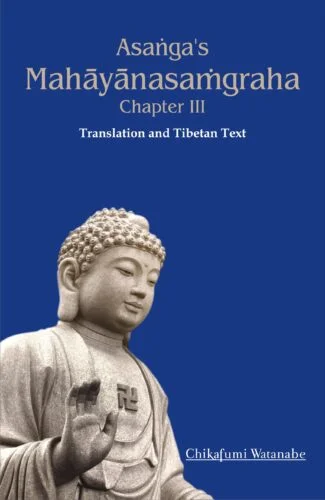
This volume presents an English translation of the third chapter of Mahayanasamgraha which discusses the bodhisattva’s entrance into the defining characteristics of the realization of vijnapti-matrata. It also contains English translations and Tibetan texts of the selected passages in the commentaries of the texts, i.e., Mahayanasamgrahabhasya and Mahayanasamgrahopanibandhana.
Mahayanasamgraha is one of the most important texts of the Yogacara School of Mahayana Buddhism. In this text, its author, Asanga, developed and systematized the Yogacara philosophy and praxis.
This volume presents an English translation of Mahayanasamgrahas third chapter which discusses the bodhisattvas entrance into the defining characteristics of what is to be known, i.e. the realization of vijnapti-matrata. The translation is based on the Tibetan text edited by utilizing and consulting all available Tibetan editions sDe dge, Co ne, Peking, sNar thang, Taipei, Lamotte, Yamaguchi and Nagao. This volume also contains English translations and Tibetan texts of the selected passages in the commentaries of the text, i.e. Mahayanasamgrahabhasya by Vasubandhu and Mahayanasamgrahopanibandhana by Asvabhava. The translation of the texts in this volume aims to advance a scholarly understanding of praxis, and the relation of the practical and philosophical theories described in the third chapter of Mahayanasamgraha and its commentaries.
| There are no products |